|
“Peace be with you. As the Father sent me, even so I am sending you. Then He breathed on them and said: ‘Receive the Holy Spirit’.” John 20:21-22. The older I become, the more my eyes are opened to the lack of control I have over things of life, how easily I can become consumed by the priorities of the world, and how duped I can be by the devil. I realize more how important it is for me to be waiting in expectation for Jesus to direct and guard me. Do you remember that the first greeting Jesus gave to those he encountered after His resurrection was “peace be with you”? I hang onto those words because this peace is where I am to live. “Peace I leave with you, my peace I give you. I do not give to you as the world gives. Do not let your hearts be troubled and do not be afraid” (John 14:27). Over the past several weeks, I have been reflecting on the Resurrection during my prayer time. When some of the disciples came and saw the empty tomb, they returned home. Mary Magdalene stayed at the tomb, waiting. If you have a minute, spend some time reading John 20. My reflection over these past weeks has focused on Mary Magdalene. Why did she stay? Understanding more of Mary Magdalene’s story, I recognize how profoundly changed she was by her time spent with Jesus. He had, in a sense, loved her back to life! Her salvation was deeply personal and so life-changing that she was willing to seek Him at the tomb and remain there. She wanted to encounter the Risen Lord. All of this has led me to ponder my own spiritual life. Is my salvation that real, that personal? Am I so completely committed to walking in the will of God that I am always waiting to hear His direction for me? Or am I so distracted by the day-to-day that I have lost that readiness to seek His presence in my life? This introspection awakens my desire to be like Mary – who waited by the empty tomb – wanting to encounter the Lord again whenever He chooses to reveal Himself. I want my relationship with my Lord and Savior to be my paramount priority because my identity, purpose, and vocation are rooted in Him. As a Christian, I proclaim that I want heaven – and that comes with the steadfast choice of the way of the Cross of Jesus Christ. Matthew reminds us, “The road to perdition is wide and many choose it. But the road to eternal life is narrow and few find it” (Matthew 7:13). My ideas, my desires, and my decisions need to be aligned with God’s will. As a wife, mother, daughter, friend, colleague, and neighbor, I must be attuned to His voice, His promptings, His guidance, and His graces. Every thought I have, every little act I do, must be in total unity with my Savior – Who is pure, unconditional love. Yes, I want to be like Mary Magdalene waiting for my next encounter with Jesus so I can go deeper and further into His Sacred Heart and become more loving to the people in my life. The question on a very practical level is: how do I achieve this? How do I stay in this disposition of grace, waiting on the Lord? I am bombarded with uncertainty, chaos, division and fear. Satan is prowling to destroy souls. My mind and spirit are attacked from all directions in this troubling world. But one thing remains the same: God is on the throne of heaven, His love for each of us is never-ending, and His promise to be with us is constant. We are told this over and over throughout the Bible. I believe this and I pray for eyes to see the path to walk through the landmines of the day. I ask Him to renew my desire to live and act in joy each day. I recommit daily to looking for goodness in those around me, to refrain from grumbling or criticizing or holding others in judgment. I drink from the well of the Scriptures, particularly the Psalms and the Acts of the Apostles, to keep my focus on His ways. I receive food to strengthen me from the Eucharistic table, the Rosary, the Divine Mercy chaplet, and singing songs of praise. When God quickens my spirit, I share a compliment, a smile, a hug, an encouraging word, a listening ear, or a prayer. Opportunities present themselves continually and my choices are what keep me in the heart of Jesus! This is what makes my salvation personal and allows me to live in joy and hope when the world screams the opposite. Little acts, one choice at a time, keep me ready for His direction. By myself, I am small and weak. Listening to Christian music, hymns or chants, working through the beads of my Rosary, saying numerous prayers, attending Mass frequently, receiving absolution for my many failings in Reconciliation, and doing an examen before bedtime all help me remain in His presence and live in His will. From these, I can smile more easily, speak encouragingly, think positively and share love unreservedly. My salvation on that Cross in Calvary rejoices in the empty tomb and I stand waiting for my risen Savior to protect me and direct me every step of my journey. Lord help me to be bold, to proclaim your truth and to love always, no matter the circumstances. Give me ears to hear Your direction and feet to follow in Your footsteps so that Your love will flow out of me to everyone I meet. And may all our souls be a wildfire of LOVE that burns into our eternal home You have prepared for us in glory!
0 Comments
As I write this, my laptop is balanced precariously on my knees because there is no longer space on my lap. My baby girl presses into my belly button with each hiccup, and I can’t help but think about her arrival. In the next three weeks, I will feel her hiccups against me from the outside. I will know her hair color and her features and I will breathe in her perfect newborn scent. Until then, I cherish the last days of my two-year-old being the baby, of my family being one of six instead of seven, and the time I have to prepare for her to enter the world.
First time mothers and mothers of many can easily relay their baby preparedness to-do lists: rinse the onesies, install the carseat, visit the doctor again. Physically and mentally, we work to be ready to welcome the sweet new life we created. I’m embarrassed to admit that I did not make plans around my spiritual readiness for a newborn until the birth of my fourth child. In all of my business preparing my mind and body for labor and delivery, God’s role in this life-event has been a mere afterthought. Confessing this to other mothers and mothers-to-be has revealed that I am not alone in this oversight. Being consumed by the physicality of what is happening to our bodies can edge out any focus on what is happening to our spirit. This time, I’m changing that. Through Seeking-Truth In Jesus Calling: Enjoying Peace in His Presence, Sarah Young writes, “When you seek My face, put aside thoughts of everything else. I am above all, and in all; your communion with Me transcends both time and circumstances. Be prepared to be blessed bountifully by My Presence, for I am a God of unlimited abundance.” The process of labor, delivery, and early mothering is one of humility. I deeply desire a window into the future so I can know and prepare for the date and time this baby will come, how delivery will go, and what the outcome will be. Of course, these are things I cannot know. By seeking Truth in His face, in the Word, and in the sacraments, I am invited to rest in the peace of what I do know: my baby and I are seen and known by the God of abundance. He alone knows what is to come, and His plan for me is good. Through Worship This truth leaves me in awe of our God, and I cannot help but to praise Him. My favorite form of worship is music, and I want to bring that into the delivery room. With each contraction, I can lose myself to the words celebrating His presence in the pain. It reminds me of His strength when I feel that I have come to the end of my own. Words of praise will be some of the first my baby hears. My labor playlist is available for you here. Through Prayer One of the many gifts of prayer is its communal nature. This has been a beautiful way to invite those we love into the process of preparing for the birth of our baby, and even into the delivery room. This pregnancy, we have invited our loved ones to pray a novena leading up to the baby’s due date. Our child’s godparents alongside many of the friends who witnessed our wedding, and vowed to help uphold us in our vocation to family life, will join us in the novena to Saint Mary Magdalene, praying for the safe delivery of our baby. (It starts today-- join us!) Other favorite prayers leading up to labor and delivery include: -St. Gerard Majella Novena for Expectant Mothers -Novena to Mary, Mother of God -Prayer for the Birth of a Child We invite our friends to pray for us, but we also invite them to offer their intentions so that we might pray for them. As Catholics, many of us are familiar with the phrase "offer it up." This means that we can enter into the redemptive suffering of Christ when we "offer up" our own suffering, work, or joy. The Catechism says, “The cross is the unique sacrifice of Christ, the ‘one mediator between God and men’ [1 Timothy 2:5]. But because in his incarnate divine person he has in some way united himself to every man, ‘the possibility of being made partners, in a way known to God, in the paschal mystery’ is offered to all men (618).” It is my hope to offer up the pain of childbirth for the cares and concerns of the people we love the most so we ask: How can I "offer up" the end of this pregnancy and my labor for you? Preparing my heart to walk alongside Jesus through the last days of pregnancy, childbirth, and recovery is the most important preparation I can make. Together with my Heavenly Father, the onesies will be cleaned and the hospital bag packed. In His presence, this child will come into the world with praise. My life and hers, our being, our all, are in Him and with Him, and for Him. And so, Amen. For more resources on Marriage and Family, please click here.
The opening of today’s reading from the Gospel of John depicts Mary Magdalene on the cusp of an encounter with the Risen Christ. “But Mary stayed outside the tomb weeping. And as she wept, she bent over into the tomb and saw two angels in white.” In this moment of bending down and looking into the tomb she thought was empty, Mary provides an everlasting model for those of us seeking the Risen Christ throughout Easter and throughout our lives. Where Jesus’ tomb had been a place of death, it is now a place of resurrection. Where Mary’s tears had symbolized her grief, they now contain her joy. This amazing moment came on a morning when Mary was vulnerable and traumatized. I cannot imagine what Mary must have been feeling there, alone – but I can only guess that seeing Jesus alive again would have been the last thing on her mind. When I feel vulnerable, my world feels very small. In grief and pain, it is difficult to “think outside the box” or to think about the “big picture.” In fact, it is difficult to think at all. Many of us are living now from this place of smallness in the light of the coronavirus pandemic. We are currently facing dangers that have fundamentally altered the patterns of our Church life and our society – along with many other woes that can cause us to despair. The Good News is that none of the woes of the world can separate us from God’s love. As Jesus told the disciples, “I will see you again, and your hearts will rejoice, and no one will take your joy away from you.” (John 16:22) I hope that this Easter week brings you such joy. And if you still have grief, I invite you to trust that it’s okay, and that God can work within that grief. We can take courage from the example of Mary Magdalene, whose own tears opened the portal between life and death. From Mary’s story and from my own story, I have faith that God can work directly within our sorrow – opening new possibilities when we had thought all the doors closed. I believe this is where God is most fully present in our lives – in the spaces where we feel lost, abandoned, and confused. In this way, I am hopeful that this Easter season will help all of us to encounter Christ in truly new and unimagined ways. For more Easter resources, please click here. This week is National Vocations Awareness Week. When I tell my vocation story, I usually describe my vocation as a response to the great love that God has shown me throughout my life. I talk about what a joy it has been to fall in love with Christ and to give my whole life to him in a specific way in religious life. And that is absolutely true and beautiful. But if I’m being honest, it’s only part of the story. I am a novice with the Daughters of St. Paul, a congregation of women religious dedicated to evangelization through the media. Shortly before I entered the convent, I was plagued with a series of doubts regarding my vocation. I had discerned that God was calling me to enter religious life, but suddenly the vocation seemed too big for me. One time in particular, I went to my spiritual director deeply concerned that I had misrepresented myself to the sisters. When I looked in the mirror, I saw a normal 21-year-old. I’d watched The Office more times than I’d care to admit, had a newly acquired taste for craft beer, and had only kicked my swearing habit a few months before. As I prepared to move to the convent and begin my formation, I was worried that the sisters might be shocked to find out that I was still pretty far from being holy. “What makes you think that you haven’t been honest with the sisters?” my spiritual director asked me. “Whenever I visit the convent, I find myself acting like a much better person than I actually am. They’re going to find out the truth once they start living with me,” I explained. “Well,” he began chuckling, “Your vocation is the very thing that is going to make you into the best person you can be. That means you’re not there yet. But look, it’s already making you holier!” It can be tempting to think that we need to get our life in order before we respond to God’s call. We want to be perfect before we think that God can work through us. But friends, that day will never come on this side of heaven. And besides, that just isn’t God’s modus operandi. When we look at who God decides to call, it is never the person whom we would choose. Peter denied Jesus three times. Mary Magdalene had seven demons cast out from her. Paul, whom my congregation is named after, literally persecuted Christians. God is not afraid of our weaknesses or our wounds. In fact, it is often the very things that we view as obstacles to his grace that make us into powerful witnesses to his grace! The truth is, I’m not worthy of being called to be a religious sister. But no one is really worthy of this calling. That’s the beauty of a religious vocation and of the Christian life as a whole: it’s not about us and what we can do for God. It’s about God and what he wants to do in us. Every sacrifice that I’ve made in these past three years, every mistake, every time I have had to ask forgiveness or forgiven someone has served to make me into the person God wants me to be. So has every hour of Adoration, every Spirit-filled conversation, and every birthday that we’ve celebrated in community. There are these kinds of moments in every vocation where God uses something that seems strangely normal to bring us ever closer to himself. Vocation is a totally free gift that God has given to us. We could never earn or deserve it. It requires a response, but it begins with the fact that he has first loved us and desires to give us abundant life. That’s the truth about religious vocation— praise God for that. Henri Nouwen said “Being the beloved expresses the core truth of our existence.” On December 27, the Church celebrated the feast of St. John the Apostle - referred to in the Gospel of John as the beloved disciple. A few short days ago, we also celebrated the great and holy feast of Christmas: the turning point in history. On that night in Bethlehem, when God became a little baby, He made it possible for us to truly become “the beloved.” St. John shows us that to truly love and become “the beloved,” we must stick by each other even through suffering. It was John, along with Our Lady and Mary Magdalene, who remained with Our Lord until His final moments at Calvary. St. John’s Gospel not only gives us one of the most profound recollections of the crucifixion, but it also reminds us that we love others “because He first loved us.” As Christians, everything in our lives must first flow from a lived relationship with Love incarnate, Jesus Christ, whose birth we celebrate this Christmas season. This relationship with Christ enables us to know what St. John knew: Jesus makes all things new, all burdens light. Before we can believe the truth of being beloved, I have found that we often believe a lot of lies. Our world and culture - not to mention the Evil One - tell us that we aren’t good enough, that we are unworthy of love. But to truly love and be loved is to live in the truth of who God says we are and the truth of who He calls us to be. The truth of our identity is that we are beloved sons and daughters, called to stay close to the manger AND the cross and commissioned to share the Good News that we are called to love because He first loved us. Today as we are still reveling in the shadow of Christ’s manger in Bethlehem, let’s ask Our Lord, Our Lady, and St. John to fill us with the greatest truth of our existence: our identity as beloved. “Rejoice! Hidden within your life is a seed of resurrection, an offer of life ready to be awakened.” -Pope Francis The world in which we live is filled with distraction and noise. I realized this in a deeper way as a new mom nursing my newborn at all hours. During those late night feedings, I needed something to keep myself awake and found myself gravitating towards my phone more and more. It was easy to hold and look at in the dark, and I found it nearly impossible to concentrate on reading a book, let alone holding it open as my newborn moved about. By the time Lent rolled around, I had been watching online TV episodes, checking my various social media feeds consistently, or scrolling through house listing websites. In our culture, this type of electronic consumption is easy to fall into. And while these sites or activities are not necessarily wrong or evil, I felt that I was more and more consumed by things of this world. In prayer, I felt the Lord asking me to be consumed with Him rather than by materialism, technology, or my own desires. What we consume defines who we are and what we become. What started out as a way to keep myself awake in those exhausting first weeks and months of motherhood had become a small addiction. What if instead, I used those minutes and hours to pray, to be still with my thoughts, to be present to my son? I had a quiet Lent. Formally, I gave up “scrolling.” I did not look at social media feeds, online shopping websites, or TV shows. I also limited my consumption of music and movies. I felt that I had truly entered a desert and made an ongoing “silent retreat” without completely removing myself from the world. I was becoming a “contemplative in action” and realized that even as a parent and married person, I could still carve out time for Christ each day through silent reflection. Instead of consuming media, I prayed and I was silent. I used my phone only for Scripture reading or Catholic reflections. I prayed the Rosary and the Divine Mercy Chaplet. I read spiritual books. I thought of all the friends and family that had asked for my prayers. I offered up this media fast for them and for the needs of the world. This was hard. I noticed how many times my hand gravitated towards the screen. I noticed how much time I had spent behind one. Now that I have emerged from the season of Lent, I can’t help but wonder how I’ve changed. In his homily at the Easter Vigil this year, Pope Francis spoke of the changed faces of Mary Magdalene and the other Mary after they visited Christ’s tomb. The two brave women ventured out in the early hours of the morning “pale and tearful” and “walked like people going to a cemetery.” They had not yet encountered the Risen Lord. When they arrived, they were met with miraculous, life-changing news: “He has been raised just as he said!” The women leave rejoicing and run immediately to tell the disciples, to evangelize. Their faces are completely transformed. This leads me to reflect, “How has my face transformed this Easter season? Have I emerged from the tomb of Lent rejoicing?” Lent and Easter are about transformation—going from the tomb to new life. Christ is raised from the dead and extends this life to us all. He has opened the doors to our salvation. We don’t have to wait for death to experience this new life. By being consumed by Christ Himself, through prayer and most powerfully through the reception of the Eucharist, we are enabled to become Christ-bearers and share the joy of new life with all we encounter. Pope Francis invites us to experience and live this transformation in our everyday lives, saying: The heartbeat of the Risen Lord is granted us as a gift, a present, a new horizon. The beating heart of the Risen Lord is given to us, and we are asked to give it in turn as a transforming force, as the leaven of a new humanity. In the resurrection, Christ rolled back the stone of the tomb, but he wants also to break down all the walls that keep us locked in our sterile pessimism, in our carefully constructed ivory towers that isolate us from life, in our compulsive need for security and in boundless ambition that can make us compromise the dignity of others. After 40 days of penance and sacrifice, it’s tempting to go back to our old ways—to “carefully constructed ivory towers” and a “compulsive need for security.” “We can grow accustomed to living with the tomb,” Pope Francis cautions. This Easter season, we must decide to leave the tomb: to stay present, to pray, to choose to be consumed by God. I have learned that in so doing my life is made richer and more meaningful. When consumed by God, I am better able to be present to and love others. As we continue our victorious journey through the Easter season, I invite you to consider how your life has changed as a result of your Lenten journey. Have you emerged from the tomb? How has your face changed? For more resources on Lent and Easter, please click here. I remember the first time I felt true repentance. It was not because I got caught making a bad decision; not because I simply felt guilty; not because I thought about what others might think of me—all of which might be gateways to repentance, but not sufficient in and of themselves. I remember the first time I felt true repentance out of love of Christ and sorrow for the rejection of His love through my sin.
I was in a small chapel in the hills of Los Gatos on a five-day Ignatian Silent Retreat. The assignment on this particular afternoon was to spend time praying over and reflecting on your past sin, on how you had rejected God’s love and, in so doing, on how you had contributed to His pain on the Cross. It was a heavy day. I took a deep breath in the chapel and started remembering and reflecting on past sinful decisions. Some, I knew blatantly. Others seemed inspired by the Holy Spirit. I had not even realized how past decisions might have affected other people more than myself, and I was illuminated in such a way that I saw how my sins spread out like a web contaminating the lives of others. Tears flowed unguarded from my eyes. How could I have done such things? I placed myself within the crucifixion narrative and saw that I had joined the Roman soldiers with their whips, their taunts, their hammers. I had pierced my Lord. I felt terrible—like the scum on the bottom of a lake in the darkness. And then I felt Him. I felt His gaze from the tabernacle. He beckoned me, inviting my eyes to meet His own. “I can’t look back at you, Lord,” my heart said. “I’m too broken, too ashamed, too unworthy.” I kept looking down at my lap, afraid to meet His gaze. But the feeling of being looked at persisted, gently. After a few moments, I could no longer bear it. Anything, even Christ’s condemnation, would be better than avoiding Him. I looked up. And I met Love. I felt Christ’s presence in the tabernacle and saw Him looking at me as a bridegroom looks at his bride on their wedding day: joy, peace and love filling his face, eyes brimming with pride and tears and awe. The gaze with which Christ looked at me turned my blemishes into radiance. I became a spotless bride because of the overflow of His love. I knew, in the midst of my sin and ugliness, perhaps the ugliest I had ever felt, that I was inherently and infinitely loved, that my dignity was in Him. And so the tears flowed evermore—tears of humility, peace and joy. I had been given yet another chance, which I used to further receive the Sacrament of Reconciliation. I assume the joy and freedom I felt after this experience and after going to Confession is how Mary Magdalene felt when she met the Christ and was freed from seven demons. We know with certainty that Mary Magdalene had been cured of seven demons, that she was a follower of Christ and that she was present at the crucifixion. We also know Mary Magdalene, like all of us, was a sinner. When Christ met her, she might have given up. She had been plagued by seven demons and thought that perhaps she would never be free. Christ offers her another alternative: freedom. As a result of our encounter with Christ's forgiveness--both by encountering His love and by being reconciled to Him--we can live in the joy of the Resurrection. For this reason, it is fitting that Mary Magdalene is cited as the first witness of the Resurrection. St. Augustine called her the Apostle to the Apostles. We find Mary Magdalene in John's Gospel weeping by the open tomb of Jesus three days after His burial, for she thinks His body has been stolen. When Christ meets her, she mistakes him for the gardener. “Mary!” Jesus exclaims to his forlorn disciple, calling her by name (John 20:16). “Kate!” He exclaimed to me in the chapel. He meets us in our despair, our sorrow. Only then can we join Mary Magdalene in looking at Christ, recognizing Him and meeting His gaze. I imagine she grasped her bridegroom’s feet, kissing them in thanksgiving and bowing before Him. We cannot stay there in gratitude. Christ called me to go out from the chapel and to go out after receiving the Sacrament of Reconciliation, as he did Mary Magdalene: “Do not hold on to me, because I have not yet ascended to the Father. But go to my brothers” (John 20:17). The repentant sinner becomes the Apostle to the Apostles. This can only be so after we have encountered the love of God. Today, I invite you to an examination of your own sin, of any time you have rejected God’s love. Do so in a sacred place: a chapel, a Church, a reverent place in your house. I invite you to this in order to surrender these moments over to Christ and to allow Him to transform them by His love. Allow Him today to gaze at His beautiful creation, which has become broken or tarnished by the Fall and by sin, and allow Him to meet you where you are at, to love you there. Only by knowing how infinitely you are loved will you be able to “go to [His] brothers,” to go out to all the world in love—radiant, joyful and renewed. Kate Flannery is the Social Media Coordinator for the Catholic Apostolate Center “Christus resurrexit! Resurrexit vere!” “Christ is risen! Truly, He is risen!” This most wonderful news remains at the core of the dogma and Gospel message of Christianity; yet when it was first proclaimed by Mary Magdalene to the apostles, they thought it was utter nonsense. Even nearly two thousand years of evangelization later, there remain those who have doubts, as the apostle Thomas did, about the Resurrection, demanding hard, irrefutable proof that they might begin to believe. Some reject the Church completely, perceiving it as clinging to outdated moral and socioeconomic beliefs. The persecution of the Church in various forms and intensities continues to this day, with some parts of the world undergoing similar brutality suffered by the earliest Christians. Critics continuously point to and decry the scandals and the perceived subsequent reformation failures harming the Church, referencing various statistics on vocation shortages to the priesthood, the instability of parishes, and any and all catechetical dissent from within. In a world where evil appears to be flourishing and truth is increasingly being perceived as relative, the faithful and nonbelievers alike find themselves wondering: how does the Church continue to endure?
“I believe in Jesus Christ” the Creed declares. Our faith is in God— not the clergy, the laity, nor any others who are susceptible to sin. Christ is and remains the “head of the body, the Church… through whom he extends his reign over all things” (CCC 792). Just as Christ chose imperfect men to be His apostles, He commissions us all to “go and make disciples of all nations... teaching them to obey everything I have commanded you” (Matthew 28:19-20). In doing so, we do not call attention to ourselves but to Christ, whose perfection we strive to imitate in our daily lives. As members of the Body of Christ, we are obligated to hold accountable and care for each other as we strive to remain holy (see 1 Corinthians 12:21-31). When one of us falls along the way, we cannot abandon that person— Christ always remains faithful (see 2 Timothy 2:13)! Everyone has shortcomings, yet our Lord never shied away from them because they weren’t perfect. His perfect love sanctifies the Church and gives her life! This same love should drive us to pick ourselves up, seek forgiveness, and continue to complete our mission of evangelization no matter the challenges facing us. As we can see in today’s culture, one of the biggest challenges facing the Church is the problem of moral relativism. Like his predecessors, Pope Francis warned how this way of thinking contributed to the “material and spiritual poverties of our time”: But there is no peace without truth! There cannot be true peace if everyone is his own criterion, if everyone can always claim exclusively his own rights, without at the same time caring for the good of others, of everyone, on the basis of the nature that unites every human being on this earth. The slippery slope of moral relativism threatens the stability of society and the integrity of the human person. The Church, to her credit, is set apart from the rest of the world in her pursuit of Truth. The world, like Pilate, retorts, “What is truth?” (John 18:38) to which the Church responds, “[God’s] word is truth” (John 17:17). I take great comfort in the Church’s strong convictions, particularly regarding human dignity, social justice, and the sanctity of life, marriage, and the family— she does not back down because the truth is unpopular or uncomfortable. In spite of persecution, the Church has always and will continue to remain steadfast in calling the world back to God. As the song goes: Lord, you give the great commission: “Heal the sick and preach the word.” Lest the Church neglect its mission and the Gospel go unheard, help us witness to your purpose with renewed integrity; with the Spirit's gifts empower us for the work of ministry. Though evil seems to overshadow the good in the news, evil never has the final word. God can bring good out of evil; after all, Easter Sunday followed Good Friday. We, as Christ’s Body on earth, cannot sit back and wait for it to happen by itself; rather, it is up to us to pray for guidance and grace to aid us in overcoming the challenges that face us in the mission God has specially tasked us to complete. In the words of St. Josemaría Escrivá, “He did not say you would not be troubled, you would not be tempted, you would not be distressed, but he did say you would not be overcome” (see John 16:33, Matthew 16:18, cf. John 15:18-25). We may pray for an increase in faith, that is, “to touch Jesus and to draw from him the grace which saves,” but even the littlest faith is sufficient to do God’s will (see Matthew 17:20-21, Luke 17:5-6)! May the doubting apostle St. Thomas intercede for us as we continue our noble work! Thomas Wong is an undergraduate at The Catholic University of America in Washington, D.C.  Today we celebrate the memorial of Saint Mary Magdalene. Many of us probably remember Mary Magdalene as one of the women who remained at the feet of Jesus throughout his suffering and death on the cross. Or, we might remember her as the first person to witness his Resurrection. Both roles are very important to consider as we examine the readings from today and their importance in recognizing God’s presence in our lives. Today’s Gospel from John focuses on Mary Magdalene’s visit to the tomb of Jesus. She arrives, finds it empty, and weeps. When confronted by Jesus, she can only say, “Sir, if you carried him away, tell me where you laid him, and I will take him.” Mary Magdalene is blinded by her grief, her own human failings, because in that moment, she believed her struggles were greater than God himself. She has forgotten Christ’s promise that he will rebuild this temple in three days (Cf, Jn 2:19). She, who sat at the feet of Jesus as he suffered on the cross, does not recognize that Christ is standing in front of her. We often go through life like Mary Magdalene, blinded by our everyday fears and hardships, but her life and her actions give us an example to follow. Though blinded by her own human failings, she learned to have faith and trust in the constant presence of the mercy and love of Christ. Christ says to her, “But go to my brothers and tell them, ‘I am going to my Father and your Father, to my God and your God.” With these words Christ proves to Mary Magdalene and to us that by his death and resurrection he has given mankind the ability to develop a personal relationship with God. Even after his death, he is calling Mary Magdalene and the disciples to more, to recognize that through his suffering on the cross he has transcended death and opened the gates of heaven to us. He calls us to renew our faith in him, “to my Father and your Father, to my God and your God.” He calls us into his arms, to know him, to love him, and serve him. This Gospel scene with Mary Magdalene reminds us that we are often blind to Christ’s presence in our lives. We sometimes forget just how significant his death on the cross actually was, we forget that he laid down his life so that we could overcome our daily struggle with sin and that we might one day be one with the Lord in heaven. This is a hard message to remember especially in these recent months in which a plane carrying 295 innocent people was shot down and people are being killed all around the world in the Ukraine, Israel, and Africa. Many of us feel lost and unable to help against this senseless violence and yet Mary Magdalene gives us the answer. That answer is Christ. He is always here for us. He is always present. We might not be able to see him at all times, for we are often blinded by our human failings, our pride, and our worldly desires, and yet Christ remains present to us. We have, like Mary Magdalene, to just open our eyes and trust in the Lord. We have to offer ourselves up as he did in the only way we know how, in imitating the life of Christ every day, first and foremost through prayer. By answering his call to know him, to love him, and to serve him we give ourselves completely to him just as Mary Magdalene did. St. Theresa of Avila gives us a simple prayer to remember the continuous presence of Christ in our lives, we but only have to look for him: Let nothing disturb you, let nothing frighten you, all things are passing away: God never changes. Patience obtains all things, whoever has God lacks nothing; God alone suffices. Nicholas Shields is a current District Deputy for the Washington, D.C. Knights of Columbus and a recent graduate of The Catholic University of America.
Alleluia! Doesn’t it feel great to be able to exclaim that again? After forty days of restraining ourselves from singing it either as part of a hymn or before the Gospel reading was proclaimed, we are finally permitted to once again raise our voices in this superlative expression of thanksgiving, joy, and triumph. In his book, Crossing the Threshold of Hope, Soon-to-be Saint John Paul II boldly announced, "We are the Easter people and ‘Hallelujah’ is our song,” and as such, how can we keep from singing?
On Sunday we celebrated the Solemnity of Easter, the most important liturgical celebration of the year. So grand, so significant is Easter that each Sunday of the year is a reflection of this feast to some degree. Each and every holy sacrifice of the Mass, though, is a memorial of the Lord’s Passion and Resurrection (cf. CCC 1330). It is important, then, to realize what sets apart the celebration of Easter from the rest of the year, apart from the colorful dresses and elaborate dinners that have become traditional for this time of year. On Good Friday, Jesus Christ, the Son of God sent to ransom the world for our sins, hung on the Cross and, after three hours of agony, “bowed His head and gave up His spirit” (Jn:19:30). Though Jesus had warned His followers of His necessary death, they were unable to understand what He was saying and were utterly shocked at what finally happened outside Jerusalem’s walls on that dark day. What a turn of events from when that very city had joyfully embraced Christ’s entrance only a few days earlier! Separated from their teacher and friend, and struggling to deal with the chaotic incomprehensibility of that Passover weekend, the disciples of the Lord locked themselves in the Upper Room of their Last Supper, fearful of what awaited them outside and in the future. Imagine their surprise, then, when Mary Magdalene burst into their presence and breathlessly announced that Jesus’ body had been taken from where it had been laid. Immediately, Peter and “the beloved disciple” ran to the tomb of Jesus, not prepared for what awaited them. What comes next would alter both their and our lives forever. Jesus was dead. There was no doubt about that. The news that Jesus was not in His tomb must have inspired those two disciples with a much needed measure of hope, if not curiosity and wonder, as they boldly ran through the streets to see the sight for themselves. Jesus’ Resurrection was unprecedented, that is, totally and radically new— no one had ever been raised from the dead like this before! Though they were not yet able to fully express, let alone comprehend, what had happened, the disciples would have had their hearts aflame with the news, a combination of joy, relief, praise, excitement, comfort, and hope that needed to be shared with the other followers of the Risen One. Upon their return to the Upper Room, Peter and the beloved disciple, along with Mary Magdalene and the other women with her, become the first evangelizers— proclaimers of the resurrected Christ to the world. Here we find the origins of the Resurrection language Christians used two millennia ago and continue to speak through today. As part of the New Evangelization, we too are called to share the Good News of Christ’s victory over death with everyone, friends and family, peers and enemies alike. It is impossible (if not selfish) to keep such wondrous news to ourselves— we need to share the joy and enthusiasm of the disciples as they gradually began to recognize the significance of the Resurrection, initially in the empty tomb and later through their encounters with the living Jesus. How, then, can we ever become complacent in our celebrations of Easter? In the weeks leading up to Christmas, we anticipate Christ’s first coming into the world with carols, treats, and gift-giving. Easter is so much more important! As the Catechism states: “If Christ has not been raised, then our preaching is in vain and your faith is in vain.” The Resurrection above all constitutes the confirmation of all Christ’s works and teachings. All truths, even those most inaccessible to human reason, find their justification if Christ by his Resurrection has given the definitive proof of his divine authority, which he had promised… The Paschal mystery has two aspects: by his death, Christ liberates us from sin; by his Resurrection, he opens for us the way to a new life. This new life is above all justification that reinstates us in God's grace, “so that as Christ was raised from the dead by the glory of the Father, we too might walk in newness of life.” (651, 654) It is often said that without Easter there would be no Christmas (Or Good Friday). This day celebrates the most important event in all of history, when our lives were changed forever. Now living in the promise of eternal life, we are called to obey Christ’s great Commission, to “go and make disciples of all nations” (Mt: 28:19) This isn’t confined to the octave of Easter (which is technically an eight-day celebration) or one liturgical season, but each and every moment of our lives, through our thoughts, words, and actions. The Resurrection of Jesus is not merely a moment in time, but the very definition of time itself. No matter how dark or painful our lives may seem, we can find comfort in the joys of Easter and carry the spark of that day each day of our lives, to be shared with all. Let us cry out in song that Christ has been raised from the dead: Alleluia! Thomas Wong is a student at The Catholic University of America and a member of the Catholic University Knights of Columbus. Have you ever wondered about women and their place in the Catholic Church? I have. When I was little, I wanted to be the Pope (before I decided my dream was to become President, of course). Only then did I discover that since I was a girl, I could not become the Pope. That infuriated me as a small child, and sparked my interest in learning more about my life’s vocation as a woman of faith. Only as I have grown older have I begun to learn how I can actively participate in my faith traditions, as a layperson and as a woman.
Women have a role in our faith. We are witnesses and called to be exemplary versions of ourselves. We are called by Christ to function in our Church using our own gifts, talents, and love. The example of women leaders in our Church shines through to us in the lives of many female saints and other women in our Church who used their femininity to do God’s will. We read about Mary Magdalene, Martha, and Mary who were friends and followers of Jesus and who were with him throughout his ministry on earth. Later in the 14th century we see St. Catherine of Siena, who helped bring the papacy back to Rome. St. Clare of Assisi founded the female religious order similar to Franciscans. St. Therese of Lisieux is a Doctor of the Church, thanks to Blessed Pope John Paul II. These women and countless others have made their mark on the Church in critical and defining ways, allowing other women to look up to them and see how to live out God’s love through actions and service. In Mulieris Dignitatem, a 1988 apostolic letter by Blessed Pope John Paul II, he says, “Holy women are the incarnation of the feminine ideal.” This tells us to follow the example of the holy women in our Church, who taught us all a great deal about the special place women hold. The New Evangelization needs women to be examples of true womanhood. What is a true example of womanhood, you might ask? Who do we look to for guidance? Well, Mary, the Mother of God is a perfect place to begin. In the Blessed Mother, we see a sinless woman, courageous and steadfast in her faith, who said the ultimate “Yes” to God at a young age. In the face of adversity and rejection, she showed how strong her faith was by bearing the Son of God and then delivering her child in a stable. No simple feat! Throughout Jesus’ life, she was with him, both in person and in prayer. When he was lost and teaching in the temple, she worried like any mother would about her son, then pondered these things in her heart; at the Wedding of Cana, she knew when he needed a nudge to begin his ministry; at the foot of the cross, she wept for the life and humanity of her son. As a woman and a mother, we see Mary’s grace and strive to imitate her desire to do the will of God, unwavering in faith and holiness. As true, confident, feminine examples of love and generosity, we need to know and understand Church teachings and desire to do more as laity in our Catholic faith. As individuals we are a part of the Body of Christ, with an important responsibility to love and with incredible opportunities at the end of our fingertips. Mulieris Dignitatem encourages us—women of faith—to deepen our own understanding about ourselves, and be a witness of faith. We must recognize that our vocation is to understand and teach the faith, to evangelize the world, to desire to grow ever more deeply in Christ’s love, to care for the poor and destitute, and even to answer the call to religious life. But, the most important of these things is to love unconditionally. As Blessed Teresa of Calcutta said, “Not all of us can do great things. But we can do small things with great love.” In our faith today, we sometimes see people questioning where and how women should participate in our faith and its traditions. This is an issue that many on both sides of the spectrum feel strongly about. The New Evangelization is a way for all people who are members of the Body of Christ—especially women—to reconnect with God and to rekindle the desire to live our lives to their fullest potential. Krissy Kirby is a Senior at The Catholic University of America and a Resident Minister through the Office of Campus Ministry. Today marks the 8th anniversary of Bl. John Paul II death. He was a man who proclaimed Christ triumphant victory over death with great zeal. This day, as we pray for his intercession, let us mediate on his words on the Risen Christ that he shared on Easter Sunday, April 23, 2000.
'O death, where is your sting?' (1 Cor 15:55) "Mors et vita duello conflixere mirando . . ." "Death and life have contended in that stupendous combat: The Prince of life, who died, reigns immortal" (Easter Sequence). Once again, today, the whole Church pauses in amazement at the empty tomb. Like Mary Magdalen and the other women, who came to anoint with spices the body of the Crucified One, like the Apostles Peter and John who came running at the word of the women, the Church bows before the tomb in which her Lord was placed after the crucifixion. A month ago, as a pilgrim in the Holy Land, I had the grace of kneeling before the stone slab which marks the place of Jesus' burial. Today, Easter Sunday, I make my own the proclamation of the heavenly messenger: "He is risen, he is not here" (Mk 16:6). Yes, life and death were locked in combat and Life was victorious for ever. All is once again oriented to life, to Eternal Life! "Victimae paschali laudes immolent christiani . . ." "Christians, to the Paschal Victim offer sacrifice and praise. The sheep are ransomed by the Lamb; and Christ, the undefiled, has sinners to his Father reconciled". The words of the Easter Sequence marvellously express the mystery accomplished in Christ's Passover. They point to the power of renewal flowing from his Resurrection. With the weapons of love, God has defeated sin and death. The Eternal Son, who emptied himself to become the obedient servant to the point of dying on the Cross (cf. Phil 2:7-8), has conquered evil at its roots by opening to contrite hearts the path of return to the Father. He is the Gate of Life who at Easter overcomes the gates of hell. He is the Door of salvation, opened wide for all, the Door of divine mercy, who sheds a new light on human existence. The Risen Christ signals the paths of hope along which we can advance together towards a world more just and mutually supportive, in which the blind egoism of the few will not prevail over the cries of pain of the many, reducing entire peoples to conditions of degrading misery. May the message of life proclaimed by the angel near the stone rolled back from the tomb overturn the hardness of our hearts; may it lead to removing unjustified barriers and promote a fruitful exchange between peoples and cultures. May the image of the new man, shining on the face of Christ, cause everyone to acknowledge the inalienable value of human life; may it encourage effective responses to the increasingly felt demand for justice and equal opportunity in all areas of society; may it impel individuals and States to full respect for the essential and authentic rights rooted in the very nature of the human person. Lord Jesus, our Peace (Eph 2:14), Word made flesh two thousand years ago, who by rising from the dead have conquered evil and sin, grant the human family of the third millennium a just and lasting peace; bring to a happy outcome the talks undertaken by people of good will who, despite so many doubts and difficulties, are trying to bring an end to the troubling conflicts in Africa, the armed clashes in some countries of Latin America, the persistent tensions affecting the Middle East, vast areas of Asia, and some parts of Europe. Help the nations to overcome old and new rivalries, by rejecting attitudes of racism and xenophobia. May the whole of creation, inundated by the splendour of the Resurrection, rejoice because "the brightness of the eternal King has vanquished the darkness of the world" (Easter Proclamation). Yes, Christ has risen victorious, and has offered man, Adam's heir in sin and death, a new heritage of life and glory "Ubi est mors stimulus tuus?". "O death, where is your sting?" (1 Cor 15:55), exclaims the Apostle Paul, touched on the road to Damascus by the light of the Risen Christ. His cry echoes down the centuries as the proclamation of life for the whole of human civilization. We too, the men and women of the twenty-first century, are invited to be mindful of this victory of Christ over death, revealed to the women of Jerusalem and the Apostles, when they arrived hesitantly at the tomb. Through the Church, the experience of these eye-witnesses has come down to us too. It is a significant part of the journey of the pilgrims who, during this Year of the Great Jubilee, are entering through the Holy Door, and going away with renewed courage to build pathways of reconciliation with God and with their brothers and sisters. At the heart of this Year of grace, may the proclamation of Christ's followers be heard more loudly and clearly, a joint proclamation, beyond all divisions, in ardent longing for full communion: "Scimus Christum surrexisse a mortuis vere". "Yes, that Christ is truly risen from the dead we know, Victorious King, your mercy show!" Amen URBI et ORBI Message of His Holiness Pope John Paul II |
Details
Archives
July 2024
Categories
All
|
About |
Media |
© COPYRIGHT 2024 | ALL RIGHTS RESERVED

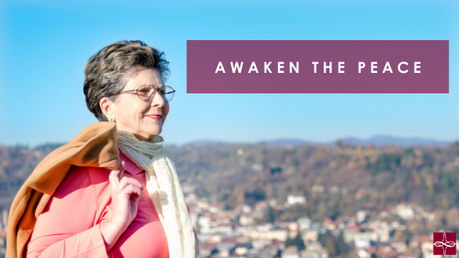

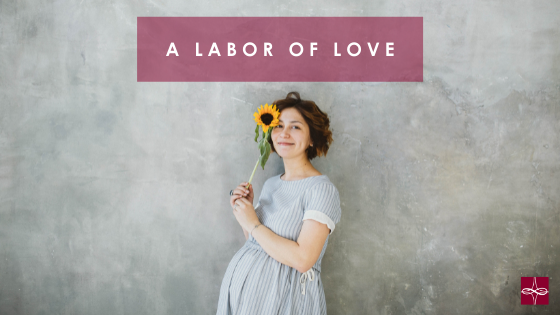

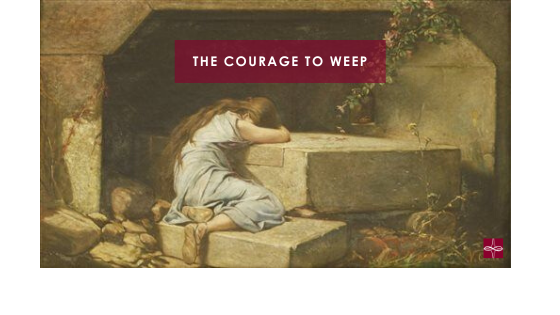

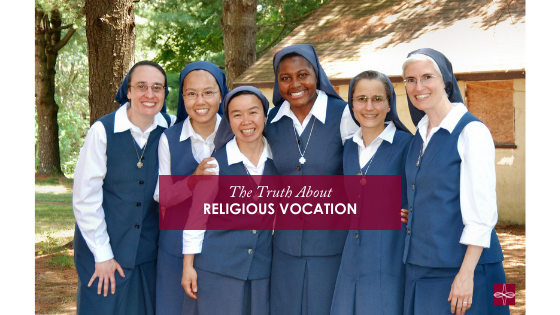
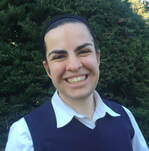
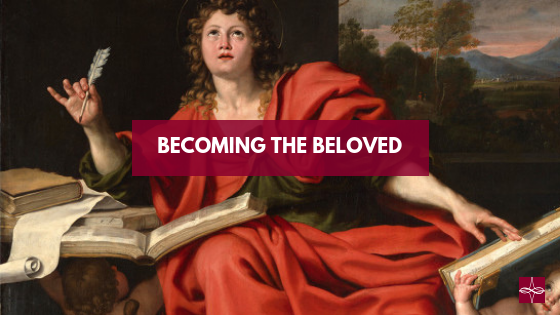

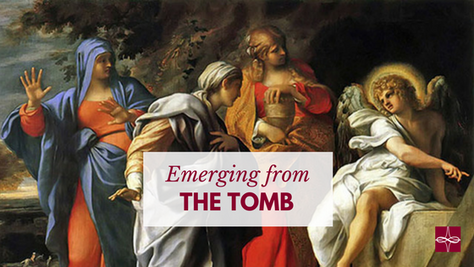


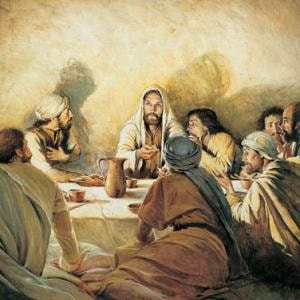

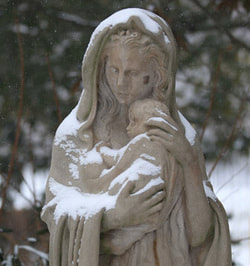

 RSS Feed
RSS Feed